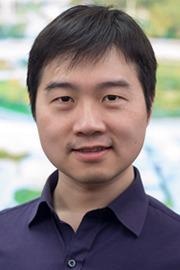AZoQuantum spoke with Dafei Jin from Argonne about his breakthrough research that has outlined a new method for creating qubits that could revolutionize quantum computing in the future.
Could you please tell us a little about your background and how you came to be involved with this research?
I received my doctorate degree in low-temperature physics from Brown University in 2012. I played with single electrons in superfluid helium for 6 years. That field has been a dying field, but it gave me the most essential inspiration and expertise that led to this discovery 10 years after I graduated. I did my postdoctoral research in quantum science and nanoengineering for nearly 6 years, first at MIT and then at UC Berkeley. I learned a lot of modern techniques during that time and started to form the idea and ambition to make a new kind of qubit when I started my career at Argonne in 2018, by integrating my background in both traditional low-temperature physics and modern quantum science and nanoengineering.
Could you briefly describe what is meant by a ‘qubit’?
A classical bit, which is the basic unit of information in our current digital devices, can be either 0 or 1. A quantum bit (qubit), which is the basic unit of information in a quantum computer, can be simultaneously 0 and 1. One may consider it as being on some kind of “overlapping” states between 0 and 1.
What limitations have qubits faced thus far in practical application?
There have been several kinds of qubits to date. They all have advantages and disadvantages in one aspect or another. But the biggest challenge for all qubit systems is that it is difficult to scale them up to link many (for example, >1000) qubits together to perform useful quantum computing.

Image Credit: Production Perig/Shutterstock.com
In your research you have developed a new method for creating qubits. Could you please outline the steps you took?
We freeze neon onto a micro-chip and turn it into a solid at low temperatures. We then spray electrons onto the solid neon from a light filament and then trap a single electron on the solid neon as our qubit. We use a chip-scale microwave resonator made out of superconductors to let microwave photons control and readout the electron qubits.
Coherence time is the time scale that a qubit can remain in a simultaneous 0 and 1 state (the overlapping state). It could be affected by many things, like how stable our electronic equipment was, how well our solid neon was grown, and under what control conditions we took our measurements.
Why was neon chosen for the surface on which to trap the electron?
Neon is one of the most inert elements in the periodic table. It naturally turns into a solid in a near-vacuum environment at low temperatures without the need for pressurizing it. It is the cleanest natural solid in the universe and can host and protect our electron qubit from environmental disturbance.
Why is your qubit platform significant? What advantages does it have compared to previous platforms?
It incorporates advantages from the three most well-known and used qubits today: superconducting junction qubits, semiconductor quantum-dot qubits, and trapped-ion qubits. It can be manufactured at a low cost, it has long-enough coherence time, and it can be operated very quickly.
How will this platform bring us closer to the efficient regular use of quantum computers?
No one has a clear vision of when the efficient regular use of quantum computers can happen. If this new qubit platform could grow well in the coming years – which will require scientists worldwide to work together – it might be able to accelerate the deployment towards 1000 qubits, sooner than other platforms. But that would still be a long way from having regularly usable quantum computers.
What still requires discovery or improvement before a quantum computing future is fully realized?
Some ingenious ways to accommodate a lot of qubits on the same chip and develop systematic ways to link and control them.
What is personally the most exciting aspect of this research for you?
Our system is very simple and similar to something that was proposed about 22 years ago. However, when a similar concept was proposed then, it never worked as intended. Our system worked extremely well even in our first and second series of experiments. Our qubits are already outperforming many existing qubits that have been studied for 20 years.
Do you plan on conducting further research on qubits?
Yes. There are many forthcoming projects to do and challenges to solve.
More Interviews from AZoQuantum: Modeling Energy Storage and Charging Rates in Quantum Batteries
Where can readers find more information?
The link to the Nature paper:
https://www.nature.com/articles/s41586-022-04539-x
The link to Argonne’s press release:
https://www.anl.gov/article/the-quest-for-an-ideal-quantum-bit
The link to a youtube video that elaborates the story:
https://www.youtube.com/watch?v=yvlDUIcOL4A
A number of other slightly different stories that contain complementary information:
https://spectrum.ieee.org/neon-qubit
https://news.fsu.edu/news/science-technology/2022/05/04/building-a-better-quantum-bit-new-qubit-breakthrough-could-transform-quantum-computing/
About Dafei Jin
 Dafei Jin is a scientist at the Center for Nanoscale Materials at Argonne National Laboratory. Jin is the leader of the Quantum Matter and Devices Lab. In the past few years, he received several awards from Argonne: The Impact Argonne Award on Innovation in 2020 for his pivotal contribution to the establishment of the first DOE user facility dedicated to quantum research: Quantum Matter and Devices Lab, the Next-Generation Leadership on Quantum Information in 2021 for his pioneering and collaborative research on quantum materials and devices, and the Physical Science and Engineering Early Investigator Named Award in 2022 for his leading role in the recent discovery and development of this new qubit platform.
Dafei Jin is a scientist at the Center for Nanoscale Materials at Argonne National Laboratory. Jin is the leader of the Quantum Matter and Devices Lab. In the past few years, he received several awards from Argonne: The Impact Argonne Award on Innovation in 2020 for his pivotal contribution to the establishment of the first DOE user facility dedicated to quantum research: Quantum Matter and Devices Lab, the Next-Generation Leadership on Quantum Information in 2021 for his pioneering and collaborative research on quantum materials and devices, and the Physical Science and Engineering Early Investigator Named Award in 2022 for his leading role in the recent discovery and development of this new qubit platform.
Disclaimer: The views expressed here are those of the interviewee and do not necessarily represent the views of AZoM.com Limited (T/A) AZoNetwork, the owner and operator of this website. This disclaimer forms part of the Terms and Conditions of use of this website.